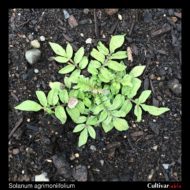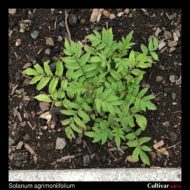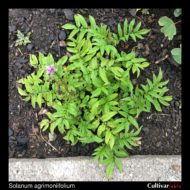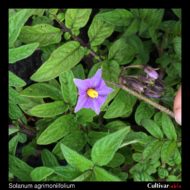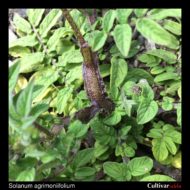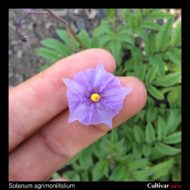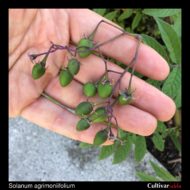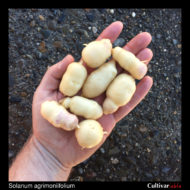Solanum agrimoniifolium
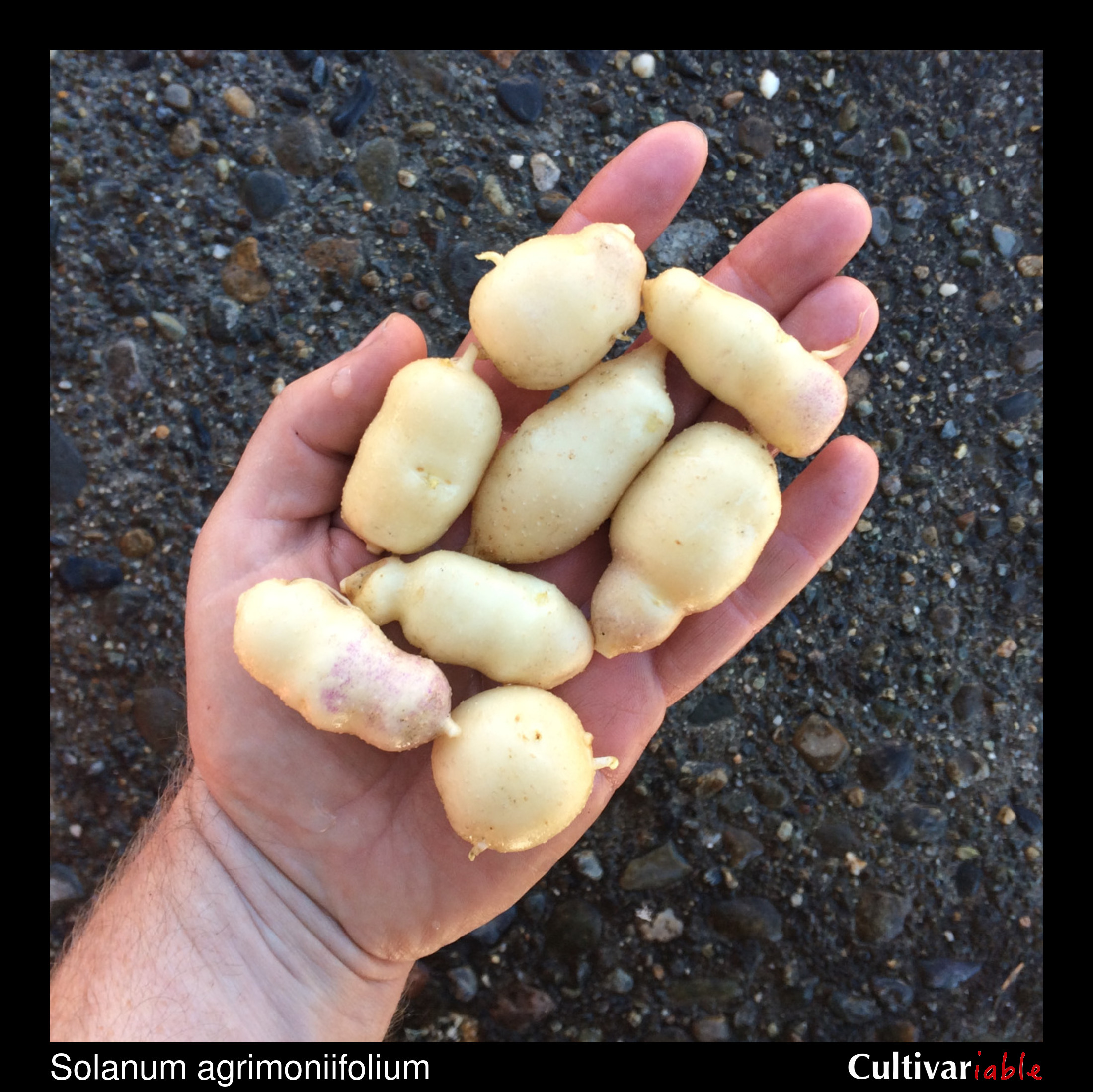
| Common Names | Tis-botch, ch’in ch’o, papa de marrana |
| Code | agf |
| Synonyms | S. agrimonifolium |
| Clade | 3+4 |
| Series | Conicibaccata |
| Ploidy | Tetraploid (4x) |
| EBN | 2 |
| Tuberization Photoperiod | Short Day |
| Self-compatibility | Yes |
| Nuclear Genome | AP |
| Cytoplasmic Genome | M |
| Citation | Rydberg: Bull. Torrey Bot. Club 51: 154. 1924. |
Description
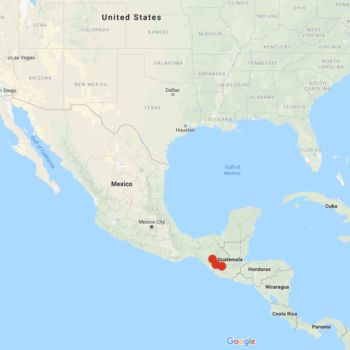
Solanum agrimoniifolium is native primarily to Guatemala, also reaching into southern Mexico and Honduras, where it is primarily a cloud forest species. Plants ranging from 18 inches to 6 feet tall. Flowers blue to purple. Berries large and conical. Tubers small or sometimes entirely absent according to Correll (1962), who also notes that plants collected from Guatemala are larger and less pubescent. Tuber color ranges from white to purple.
The specific epithet, agrimoniifolium, refers to the similar appearance of the leaves to agrimony. It is formed from the Latin words “agrimonia,” for “agrimony,” and “folium,” for “leaf.” While there is no completely standardized pronunciation for scientific names, the most common way to pronounce this species is probably so-LAY-num ag-rih-moh-nee-ih-FOH-lee-um. The spelling of the specific epithet for this species varies, with both agrimoniifolium and agrimonifolium in common use, something to keep in mind when performing searches.
Plants are found at elevations of 6,200 to 11,200 feet (1900 to 3400 m) (Correll 1962).
Anaylsis of AFLP markers could not find a clear species boundary between S. agrimoniifolium and S. oxycarpum (Jimenez 2008) and neither could phenetic analysis (Fajardo 2008), so it is possible that these species will be combined in the future. It is also possible that the species are distinct but frequently interbreed.
Resistances
Vega (1995) found that this species is less frost tolerant than domesticated potato.
| Condition | Type | Level of Resistance | Source |
|---|---|---|---|
| Alternaria solani (Early Blight) | Fungus | Somewhat resistant | Jansky 2008 |
| Phytophthora infestans (Late Blight) | Fungus | Not resistant | Bachmann-Pfabe 2019 |
| Phytophthora infestans (Late Blight) | Fungus | Some resistance | Karki 2020 |
| Potato Virus Y (PVY) | Virus | Not resistant | Cai 2011 |
Glykoalkaloid content
I have not found any information about glycoalkaloid content in this species, but tubers that I have tasted were mildly bitter.
Images
Cultivation
I have found seeds of this species easy to germinate using the standard conditions for S. tuberosum.
Towill (1983) found that seeds of this species stored at 1 to 3 degrees C germinated at 100% after 15 years.
Breeding
Crosses with S. tuberosum
| Female | Male | Berry Set |
Seed Set | Ploidy | Germ | Source |
|---|---|---|---|---|---|---|
| S. agrimoniifolium | S. tuberosum | Minimal | Minimal | Jackson (1999) | ||
| S. tuberosum | S. agrimoniifolium | None | None | Jackson (1999) |
Crosses with other species
Watanabe (1991) found that 13.7% of varieties of this species produced 2n pollen and Jackson (1999) found 10-13%, which would be effectively octoploid and 8EBN.
| Female | Male | Berry Set |
Seed Set | Ploidy | Germ | Source |
|---|---|---|---|---|---|---|
References
Solanum agrimoniifolium at Solanaceae Source

